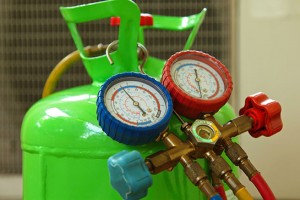F-gas agreement: Further details revealed
24th December 2013 BELGIUM: EFCTC, the organisation representing fluorocarbon interests in Europe, has broken ranks with other stakeholders by revealing further details of the recent F-gas revision agreement.
BELGIUM: EFCTC, the organisation representing fluorocarbon interests in Europe, has broken ranks with other stakeholders by revealing further details of the recent F-gas revision agreement.
Possibly as a result of the leaking of the original revision document in October 2012, the organisations close to the negotiations have only revealed the most basic details prior to Parliamentary approval, some even declining to fully brief their own members.
The latest information from the EFCTC reveals more on the exemptions, review procedures, reporting requirements and how the “traceability” system to track HFCs in imported pre-charged equipment, first mentioned by the Cooling Post, might operate.
In full, the phase-down steps on the total placement on the market of bulk HFCs are (in tonnes of CO2 equivalent and based on a baseline 2009-12 average):
 2015: 100%
2015: 100%
2016-17: 93%
2018-20: 63%
2021-23: 45%
2024-26: 31%
2027-29: 24%
2030: 21%
The phase-down does not apply to the new HFOs.
Traceability
According to the EFCTC document, a detailed traceability process has been established for the import of equipment containing HFCs. From January 1, 2017, all refrigeration, air conditioning and heat pump equipment pre-charged with HFCs will need to be accounted for within the HFC quota system. An annual declaration of conformity by equipment manufacturers/producers, verified by an external auditor, will also be required.
Under the HFC Import quota system, the EC will allocate quotas for placing HFCs on the market for each producer and importer for each year beginning with the year 2015.
The reference values for the producers and importers will be re-calculated by October 31, 2017, and again every three years after that. Each producer/importer will receive a quota corresponding to 89% of the reference value multiplied by the percentage. The remaining percentage will cover imports from newly registered importers and HFCs that are imported in equipment.
Reporting requirements, record keeping
Companies importing, producing and exporting HFCs in excess of 100 tonnes of CO2-eq and gases listed in annex II have annual reporting obligations. Manufacturers or suppliers of pre-charged equipment will also have reporting obligations if they place on the market equipment totalling more than 500 tonnes of CO2-eq. This also includes blends containing HFCs.
Any company placing more than 10,000 tonnes of CO2-eq HFCs on the market, must have their data verified by an independent auditor accredited under the ETS regulation, or accredited to verify financial statements.
The regulation also states that suppliers of HFCs shall keep records including “if appropriate” the certification numbers of the purchasers.
 Bans
Bans
As previously reported by the Cooling Post, the regulation introduces bans on the placing on the market on the following:
• Domestic refrigerators and freezers containing HFCs with a GWP of 150 or more from January 1, 2015.
• Commercial refrigerators and freezers containing HFCs with a GWP of 2500 or more from January 1, 2020, and containing HFCs with a GWP of 150 or more from January 1, 2022.
• Stationary refrigeration equipment that contains or relies upon for its functioning HFCs with a GWP of 2500 or more from January 1, 2020.
• Commercial centralised refrigeration systems with a capacity of 40kW or more that contain or rely upon their functioning, fluorinated gases with a GWP of 150 or more, from January 1, 2022. An exception has been made for when HFCs are being used in the primary circuit of cascade systems where GWPs of under 1500 will be allowed. There is, however, to be a review of this particular ban on July 1, 2017, to see if alternatives are available and viable.
• Mobile room air conditioners that contain HFCs with GWP of 150 or more from January 1, 2020.
• Single split air conditioning systems containing less than 3kg of F-gases with a GWP of 750 or more from January 1, 2025.
There is, however, an exception which could provide a stay of execution of up to four years for certain types of equipment in certain countries. The document states: “The Commission may, exceptionally, and taking into account the objectives of this Regulation and following a substantiated request by a competent authority of a Member State, by means of implementing acts, authorise a time-limited exemption of up to four years to allow the placing on the market of products and equipment listed in Annex III [the banned list] containing, or whose functioning relies upon, fluorinated greenhouse gases, where it is demonstrated that, for a particular application, technically feasible alternatives are not available, or cannot be used for technical or safety reasons, or where the use of such alternatives would entail disproportionate costs.”
As previously reported, a number of provisions on servicing have also been introduced.
The use of fluorinated greenhouse gases with a GWP> 2500 to service or maintain refrigeration equipment with a charge size of 40 tonnes of CO2 equivalent or more, will be prohibited from January 1, 2020. This will not apply to military equipment or equipment intended for applications designed to cool products to temperatures below -50°C
Reclaimed HFCs with a GWP>2500 will still be able to be used for the maintenance or servicing of existing refrigeration equipment until January 1, 2030. Recycled HFCs with a GWP>2500 can also still be used until January 1, 2030, provided they are only used by the company which carried out their recovery as part of maintenance or servicing or the undertaking for which the recovery was carried out as part of maintenance or servicing.
A comprehensive report on the effects of the regulation is due at the end of 2022.
The final agreement will require a vote in the Parliament Environment Committee and then the Parliament plenary which will probably be in February or March 2014. It will, finally, require approval by the European Council and will apply from January 1, 2015.








